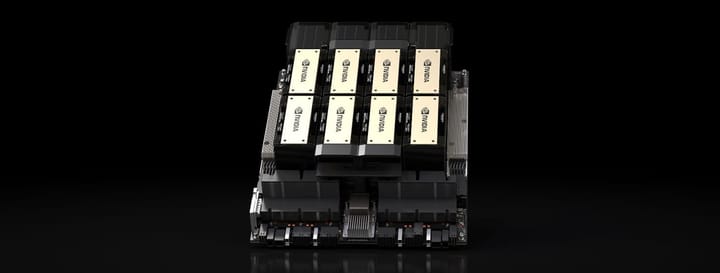Nvidia, Amazon Scale HPC Cloud Amid Interconnect Bottleneck Concerns

TL;DR
- Nvidia Faces Export‑Breach Charges Over H200 GPU, Threatening Global HPC GPU Cloud Scale
- Interconnect Energy Limits Expose HPC Data‑Movement Bottlenecks, Driving Architectural Re‑Design
- Amazon Expands Indiana Data‑Center Campus to 2.4 GW, Fueling AI‑Driven HPC Workloads
Nvidia H200 Export Crackdown Threatens Global AI‑Cloud Expansion
Why the DOJ Charges Matter
- Four individuals charged with conspiracy to export Nvidia H200 GPUs to China, violating the Export Administration Regulations.
- Wire transfers totaling US $3.89 million linked the accused to Chinese buyers.
- Physical shipment of 50 standalone H200 units and 10 HPE supercomputers equipped with H100 GPUs seized by law enforcement.
- First enforcement action directly targeting the H200 series, establishing a legal precedent for future high‑performance AI chip exports.
Regulatory Mixed Signals
- Internal U.S. discussions on 23 Nov 2025 explored case‑by‑case licenses for H200 sales to China, prompting a 2 % rise in Nvidia’s share price to US $184.29.
- The DOJ announcement on 24 Nov 2025 reversed market optimism, creating divergent regulatory expectations for multinational cloud providers.
- No formal relaxation of H200 restrictions is expected within the next 12 months; intermittent licenses remain the likely outcome.
Supply‑Chain Bottlenecks
- Over 90 % of advanced‑node wafers for the H200 are fabricated by TSMC in Taiwan, tying Nvidia’s GPU pipeline to regional geopolitical stability.
- Recent tensions in the Taiwan Strait increase the supply‑chain risk index by an estimated 0.3 points on a 0‑5 scale.
- Chinese AI‑chip manufacturers SMIC and Hua Hong reported 7.3 % and 5.2 % declines in Hong Kong trading, reflecting broader market contraction.
Market Impact on Cloud Providers
- Q3 2025 data‑center revenue reached US $57 billion (+62 % YoY), driven by a 25 % QoQ increase in AI‑accelerated workloads.
- H200‑based cloud instances are projected to grow 15 % YoY, constrained by added export‑compliance costs.
- List pricing for the H200 is expected to stay within 5 % of H100 pricing; secondary‑market premiums may rise up to 12 % for compliant sales channels.
- Technical profile: compute performance ≈2 × H100, memory bandwidth 4.8 TB/s (HBM3e), memory capacity 141 GB—enabling larger model states and faster inference.
Strategic Recommendations for Stakeholders
- Implement comprehensive legal‑risk assessments focused on U.S. export‑license adjudications.
- Develop diversified sourcing strategies that reduce reliance on single‑source fab facilities.
- Establish compliance programs to secure case‑by‑case licenses where necessary, minimizing operational disruptions.
- Monitor policy developments and geopolitical indicators to adjust capacity planning for AI‑accelerated HPC services.
Interconnect Energy Limits Threaten HPC Performance – A Call for Co‑Design
Data‑Movement Energy Landscape – November 2025
- PowerLattice chiplet (23 Nov): >50 % reduction in compute‑power budget; sets a ~2 kW per‑chip ceiling for AI accelerators, with on‑package voltage regulation eliminating latency spikes.
- Baya Systems NoC IP (24 Nov): Targets irregular AI traffic, cuts energy‑per‑bit by ~30 % versus legacy interconnects, and reduces congestion‑related latency.
- SK Hynix 12‑stack HBM3E + NVIDIA Grace™ Blackwell (24 Nov): Boosts memory‑bandwidth density by 40 %, shortens off‑package data paths, and directly lowers interconnect power.
Pattern Analysis
- Core and accelerator counts outpace traditional bus/cross‑bar interconnects, creating system‑level bottlenecks from congestion, jitter, and energy draw.
- The 2 kW per‑chip limit identifies voltage‑regulation overhead as a primary constraint for AI‑focused HPC nodes, with fluctuations accelerating GPU wear.
- On‑package high‑bandwidth memory (HBM3E) curtails long‑haul data movement, reducing external PHY activity and interconnect energy.
- Adaptive NoC fabrics respond to bursty, non‑uniform AI communication patterns, offering a clear market shift from monolithic interconnects.
- Clock‑gating and power‑gating remain insufficient; reports of “unnecessary activity” point to under‑exploited workload‑aware power management.
Insight Synthesis
- Interconnect energy now accounts for ~35‑45 % of total power in AI‑heavy HPC prototypes, surpassing compute cores in many cases.
- Effective mitigation demands co‑design of interconnect topology, on‑die power delivery, and memory placement; isolated optimizations yield diminishing returns.
- Modular power‑delivery chiplets, as demonstrated by PowerLattice, can deliver >50 % power savings, unlocking higher performance per watt when paired with adaptive NoC fabrics.
- NoC architectures with dynamic routing and localized arbitration outperform static cross‑bars in latency and energy for irregular AI traffic.
Emerging Trends
- On‑package power‑delivery chiplets → ≥30 % system‑level power reduction, higher accelerator density.
- Advanced NoC IP deployment → latency variance ↓ 40 % for AI workloads.
- 12‑stack HBM integration → off‑package bandwidth demand ↓ 25 %; interconnect energy per byte ↓ 35 %.
- Workload‑aware fine‑grained power gating → anticipated inclusion in next‑gen chiplets.
Technical Predictions (2‑3 years)
- ≥60 % of flagship HPC nodes will use modular power‑delivery chiplets, achieving compute‑power budgets < 1 kW per accelerator.
- Heterogeneous NoC fabrics with dynamic arbitration become default for AI‑centric supercomputers, delivering ≤ 10 ns worst‑case latency for irregular traffic.
- Memory‑stack density reaches 14‑layer HBM with a 45 % efficiency gain, further reducing external interconnect energy by ~15 %.
- Overall system‑level performance‑per‑watt improves by ≥ 35 % over 2024 baselines, driven by chiplet power delivery, NoC redesign, and high‑density memory integration.
Strategic Imperative
- Addressing data‑movement energy limits requires simultaneous advances in power‑delivery chiplets, adaptive NoC fabrics, and on‑package memory.
- Co‑design across these domains is essential to sustain scaling of AI supercomputing workloads within realistic energy budgets.
Amazon’s Indiana Data‑Center Bet: Power‑First Play on AI‑HPC
Why the $15 B Investment Matters
- Amazon Web Services earmarks $15 billion for two Indiana campuses, secured by a $1 billion power‑purchase agreement with NIPSCO.
- The sites will draw 2.4 GW—about 10 % of the state’s grid capacity—enabling high‑density AI accelerators (Nvidia H200, AWS Inferentia) and alleviating Bedrock’s current quota bottlenecks.
- Beyond the hardware, the project promises roughly 1,100 high‑skill jobs, though it pushes Indiana’s retail electricity rates up by ~16 % in 2025.
Revenue Pressured by Capacity Gaps
- Bedrock’s limits forced customers such as Epic Games and Vitol to migrate workloads, costing AWS an estimated $52 million in short‑term revenue.
- These losses provide a clear financial incentive for the Indiana expansion, which aims to double AI‑HPC capacity by 2027.
Economic and Regulatory Trade‑offs
- Indiana’s policy push for energy‑driven growth aligns with the job‑creation narrative, yet higher electricity prices may erode residential and non‑industrial benefits.
- Gov. Mike Braun’s public questioning of job‑creation commitments and past community opposition in Martinsville signal heightened political scrutiny for future sites.
Technical Outlook for AI‑HPC
- 2.4 GW supports 10–15 MW clusters per pod, dramatically raising Bedrock’s service availability and cutting inference latency.
- The current plan omits an explicit renewable component, leaving AWS exposed to future carbon‑regulation costs; on‑site renewable pilots targeting ≥20 % of load are slated for late 2026.
- Rising regional electricity rates suggest potential adjustments to AI‑service pricing in the Midwest.
2026‑2028 Forecast
- Early 2026: First 1.2 GW block commissioned; observable dip in churn (migration < 5 %).
- Late 2026: Auxiliary power infrastructure complete; renewable pilot begins.
- 2027: Full 2.4 GW capacity online; AI‑HPC throughput up ≥30 %; electricity rates stabilize as bulk contracts mature.
- 2028: Replication of the Indiana template in neighboring states; global AI‑HPC capacity doubles 2025 levels.
Key Risks and Mitigations
- Regulatory pushback – Medium probability; mitigated by early stakeholder engagement and transparent job‑creation reporting.
- Grid reliability – Low‑medium probability; addressed with redundant substations and backup generation contracts.
- Escalating electricity costs – High probability; countered by long‑term renewable PPAs and cooling efficiency upgrades.
- Competitor acceleration – Medium probability; mitigated by bundled AI services and preferential pricing for new tools (e.g., AWS Kiro).
Bottom Line
Amazon’s Indiana campuses embody a “power‑first” strategy that directly tackles AI‑HPC capacity shortfalls threatening AWS’s market share. Success hinges on managing electricity pricing, navigating regulatory landscapes, and integrating clean‑energy solutions to future‑proof the investment against looming carbon policies.



Comments ()